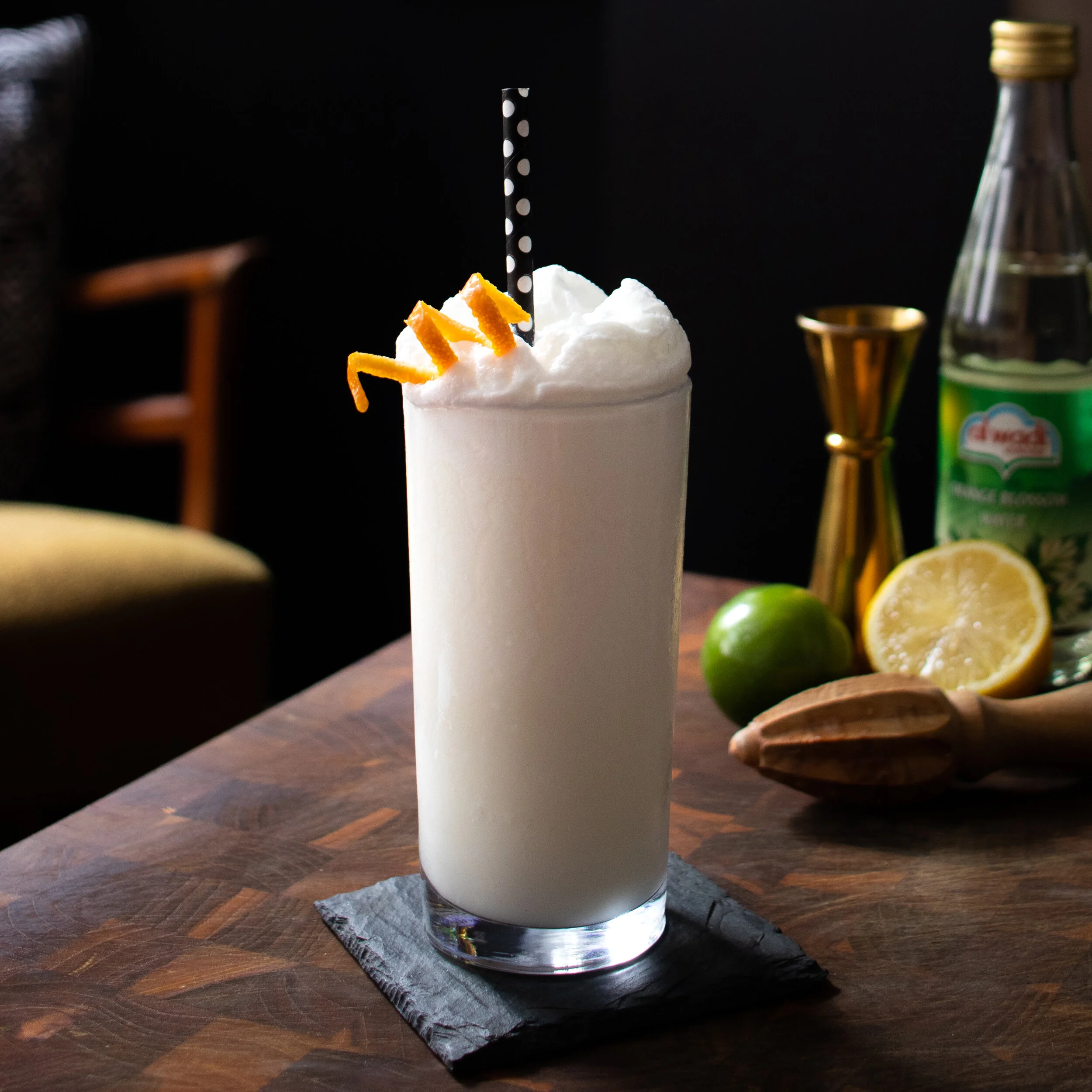2 oz London dry gin
1 oz fresh orange juice
.5 oz real grenadine
Dash of Absinthe
Orange twist
Add the gin, orange juice, & grenadine to a cocktail shaker with plenty of ice. Shake until frosty. Add a dash of Absinthe to a chilled coupe or martini glass, and swirl around the glass to “rinse” the glass with the absinthe. Strain the cocktail into the absinthe rinsed glass and garnish with an orange twist.
*notes: The original recipe for the Monkey Gland called for equal parts (1.5 oz each) gin and orange juice, but most modern bartenders prefer this updated version.
The quality of the grenadine you use makes a difference. Real grenadine should have pomegranate juice in the ingredients. If not, don’t use it. You can find it online easily or make your own.
The Monkey gland was invented sometime at the end of the 1910s and became popular during the Prohibition era.
The name of the drink references a Russian-born French surgeon named Dr. Sergei Voronoff who thought that the sex glands of living organisms held the key to health, vigor, and longevity. During the 1910s and 20s, he performed expensive surgeries to graft the testicles of monkeys onto his patients, promising “a life span of 125 years and an old age of a few months.” His work became world famous, and by 1927 Voronoff had done more than 1,000 procedures on his wealthy patients. In reality, his work did absolutely nothing, and he was finally discredited by the 1940s.
Nevertheless, at the end of the 1910s he and his work were a pop culture phenomenon and the Monkey Gland was invented in either Paris or London in tribute. In 1919, a New York Times story carried the headline, “MONKEY GLAND’ LATEST COCKTAIL”, and it wasn’t long before it became a hit in the United States as well. Beyond Voronoff’s mad scientist reputation, the cocktail may have also become such a hit because it contained a small dash of absinthe, which was banned in much of Europe as well as the U.S. because of it’s supposed (but now debunked) hallucinogenic properties. Many bars still had a few bottles of absinthe left after the ban, and the Monkey Gland used so little that they could make it stretch while still giving the cocktail a forbidden and exciting feeling.
No matter the reason, this gussied up gin and juice is surprisingly delicious!



